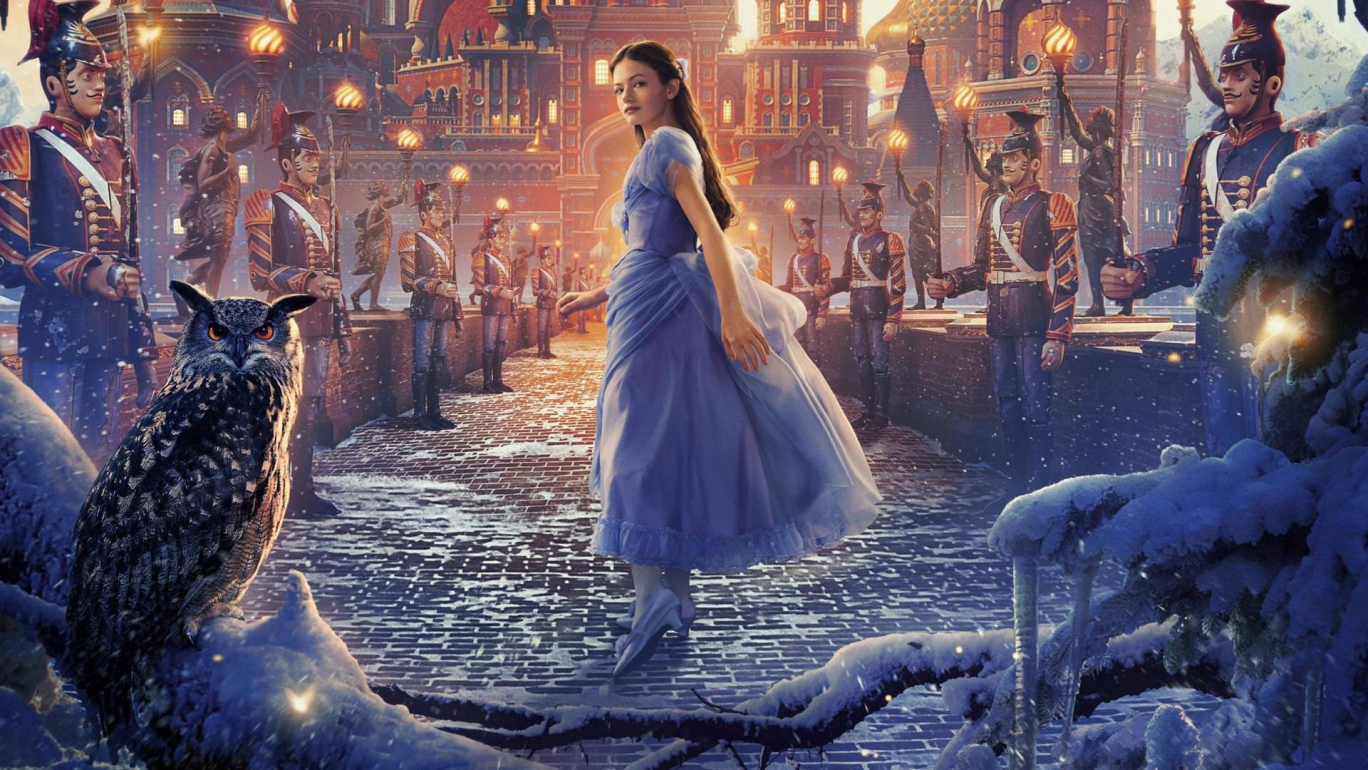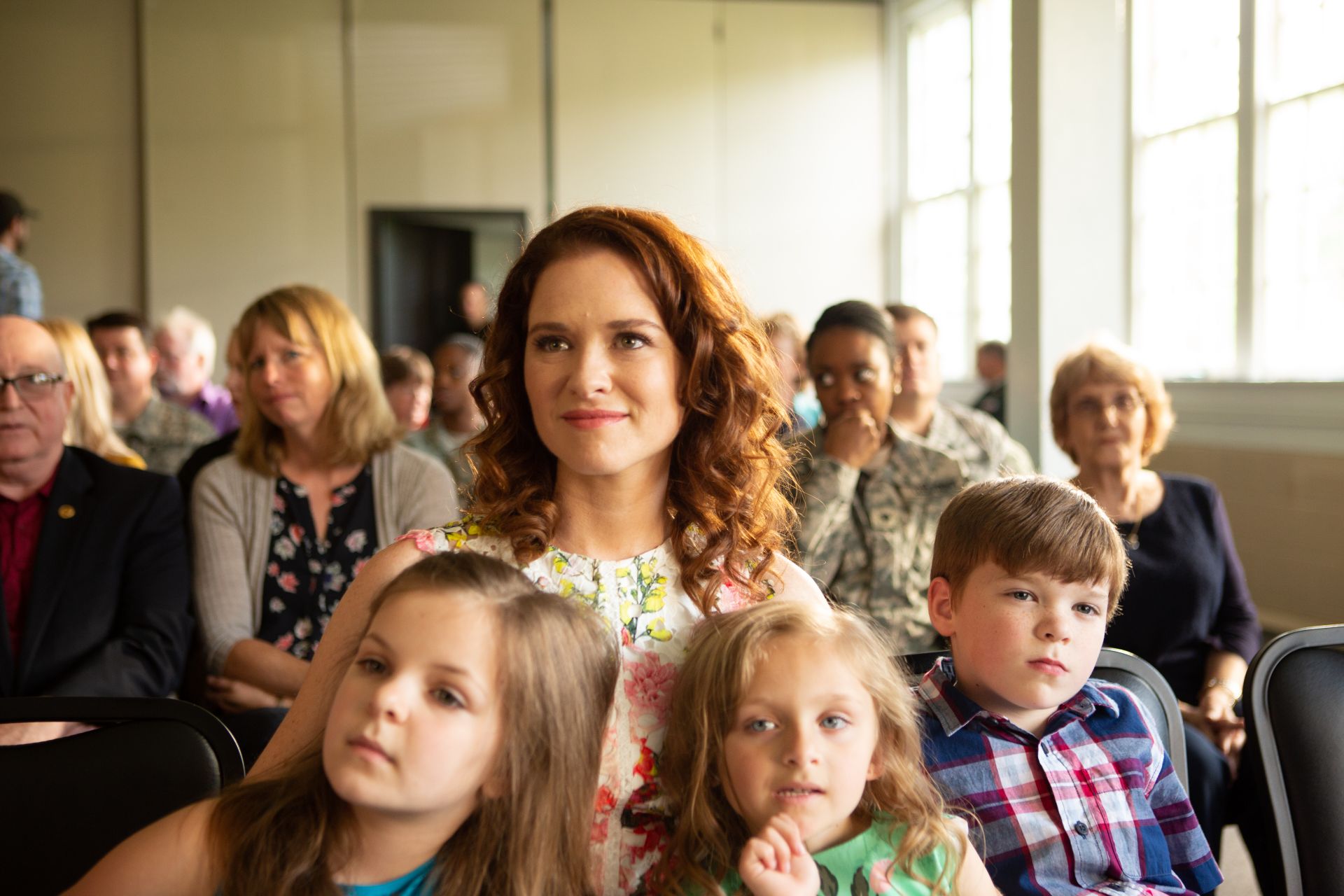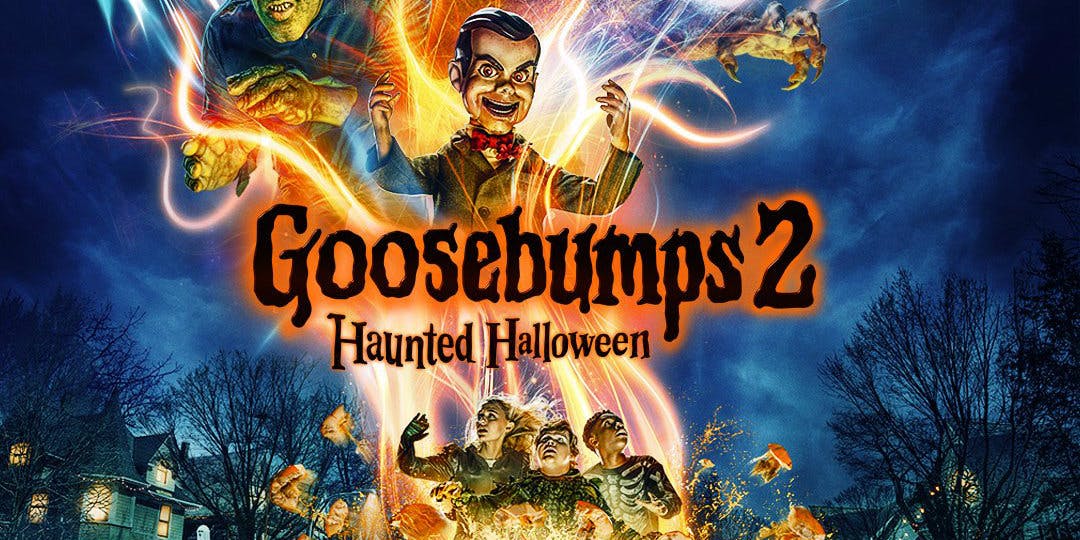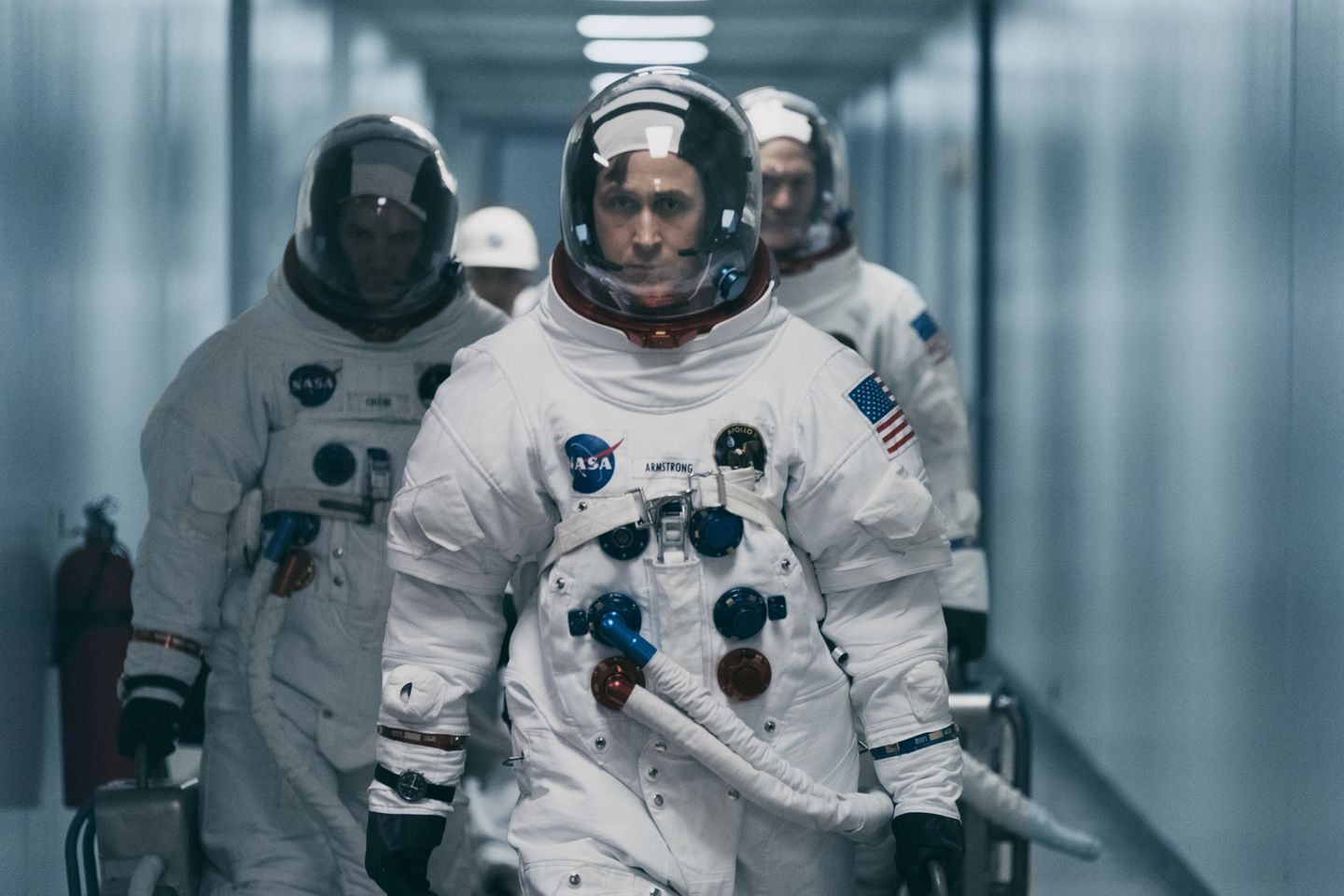
by Michael Foust | Nov 9, 2018
The animated movie “The Grinch” (PG) opens in theaters this weekend, giving us what our reviewer says is close to being the perfect family-friendly film.
He hates snowmen. He despises upbeat music. He even wears “Mold Spice” body spray. And the welcome mat outside his home? It reads, “Seriously, Go Away!”
He is the infamous Mr. Grinch – the green creature who loathes anything filled with joy and who lives in a mountaintop abode, overlooking the happy-go-lucky people of Whoville.
If Mr. Grinch had his way, he would never encounter the citizens of this lovely village. But he has no choice, as Whoville is home to the region’s only grocery store, and he’s running low on food.
Thus, Mr. Grinch descends the mountain during one cold December day to purchase a few provisions he hopes will last him until spring. While there, he sees everything he detests: Christmas carolers, colorful lights and laughing children. He also bumps into a friendly citizen who tells him that Whoville’s mayor wants this year’s Christmas to be three times bigger than it’s ever been.
Once back at his home, Mr. Grinch decides he’s had enough of happiness, and thus begins plotting to stop Whoville’s Christmas celebration. He will dress like Santa, sneak into the city on Christmas Eve and take everything related to the holiday, including the lights, decorations and gifts.
“I’m going to steal their Christmas,” he tells his trusty dog, Max.
Will his plan work?
The animated movie The Grinch (PG) opens in theaters this weekend, starring Benedict Cumberbatch (Doctor Strange) as Mr. Grinch, actor and composer Pharrell Williams as the narrator, Rashida Jones (Parks and Recreation) as Donna Who, and Cameron Seely (The Greatest Showman) as Cindy Lou Who.
It is based on the children’s book How the Grinch Stole Christmas by author Theodor “Dr. Seuss” Geisel and is the second big-screen adaptation of the story, following the 2000 live-action movie starring Jim Carrey.
The newest film largely follows the book and tells how Cindy Lou Who and the citizens of Whoville helped change Mr. Grinch’s outlook on life. Indeed, his heart grows three sizes at the end of the movie. The film also fills in the gaps by answering a few questions not addressed in the Dr. Seuss book, such as: Why was Mr. Grinch’s heart too small in the first place?
The Grinch is a funny and charming family-friendly movie that is full of the same positive lessons seen in the book. It also includes a few Christ-centric Christmas songs that take center stage. Minus a couple of moments of rude humor, it could be rated G.
Warning: minor/moderate spoilers!
(Scale key: none, minimal, moderate, extreme)
Violence/Disturbing
Minimal. The Grinch destroys a boy’s snowman, and then throws a snowball at him. Slapstick humor is used occasionally; the Grinch gets accidentally slingshot from his mountaintop perch into a huge tree. Later, he is sledding down a hill when he runs headfirst into a tree.
Sexuality/Sensuality/Nudity
None. We see the Grinch getting ready in the morning in his underwear. He exercises in a speedo-like outfit. A boy’s Santa-like clothes are ripped off by a robotic contraption; he covers himself with a cookie (This likely is what prevented the movie from being rated G).
Coarse Language
None. One “geez” and one or two variations of “stupid.”
Other Positive Elements
Donna Who is a hard-working single mom who works all night and then takes care of her children during the day. As Cindy Lou Who says, it’s “not fair.” Cindy Lou Who decides to ask Santa to help make her mom happy. In fact, it’s her only request to him.
The song God Rest Ye Merry Gentlemen is sung by carolers, and we hear several times the lyric “Christ our Savior was born on Christmas day.” Later, a family sings Silent Night as they gather in their home.
For the most part, children in the movie obey their parents.
Life Lessons
The Grinch is full of positive messages, led by Cindy Lou’s selflessness and Whoville’s display of joy despite their gifts and decorations being stolen. When you combine those messages, you get a powerful refutation of our society’s selfish and materialistic view of Christmas (“He didn’t steal Christmas. He just stole stuff. … Christmas is in here,” Donna Who says, pointing to her heart). Even though we never hear that “Jesus is the reason for the season,” it’s nevertheless great fodder for a post-movie discussion with the family.
The movie also has a loud message about caring for others and reaching out to people in need. The Grinch hates Christmas because he is lonely. He’s lonely because he grew up an orphan and never received love (or gifts) at Christmas. He subsequently turned bitter.
Worldview/Application
I grew up reading How the Grinch Stole Christmas. I know the story by heart. Yet as I sat in the theater and watched the big-screen adaptation, I began viewing it as a modern-day parable – that is, a story with a moral lesson. The lesson(s): Stop worrying about the “stuff” that too often distracts us. Live an unselfish life. Care for those who are lonely and in need.
How many people around us are like the Grinch? They’re scarred and hurting due to something in their past. They need love. They need Jesus.
True, The Grinch isn’t a Christian story in the traditional sense, but its positive themes have their basis in Scripture.
Jesus said it best: “A new commandment I give to you, that you love one another: just as I have loved you, you also are to love one another. By this all people will know that you are my disciples, if you have love for one another” (John 13:34-35).
What I Liked
The animation. The humor. The script. It’s close to being a perfect children’s film.
What I Didn’t Like
The potty humor isn’t over the top, but why include it? This movie was so close to gaining a “G” rating.
Discussion Questions
- Why was the Grinch the way he was? What caused him to change from his evil ways?
- Do you know someone who is lonely? How could you help bring him/her joy?
- What does the movie teach us about Christmas gifts and decorations? Are they bad?
- What can you do to keep the focus on Christ this Christmas?
Entertainment rating: 4 out of 5 stars. Family-friendly rating: 4.5 out of 5 stars.
Rated PG for brief rude humor.

by Michael Foust | Nov 2, 2018
Clara is a timid teen girl who is searching for her place in life following her mother’s death. It’s also Christmas – a fact that only adds to her sorrow.
“I don’t want to enjoy it,” she tells her father.
Her mom, though, had other ideas, and left her and her siblings several Christmas gifts they are to open on Christmas Eve. Clara’s present is a mysterious-yet-beautiful silver egg. It contains no key, even if it does include a note from her mom.
“Everything you need is inside,” it reads.
But without a key, how is she to open it? Even Clara – who excels in science and mechanics – cannot figure it out. Finally, though, she catches a break upon visiting her godfather’s workshop, which is nestled away in a huge mansion. While exploring the building during a Christmas gift hunt, she crosses over into another world full of talking toy soldiers, snow-filled forests and intelligent mice. She also finds the key, although it is quickly snatched away by a mouse, who disappears into the woods. Clara also discovers that everyone here calls her “Princess” and claims that her mother is the queen.
Can Clara find the key – and perhaps her identity in life, too?
Disney’s The Nutcracker and the Four Realms (PG) opens this weekend, starring Mackenzie Foy (Interstellar) as Clara; Morgan Freeman (Million Dollar Baby) as her godfather, Drosselmeyer; Helen Mirren (The Queen) as Mother Ginger; and newcomer Jayden Fowora-Knight as a soldier named Phillip. It was inspired by E.T.A. Hoffmann’s classic 1816 story The Nutcracker and the Mouse King.
The other world is divided into four realms. Three of those – the Land of Snowflakes, Land of Flowers and Land of Sweets – are governed by regents. Her key is lost in the Fourth Realm, which is led by the evil Mother Ginger. The regents urge Clara to travel there and find her key. They also request that she help protect them from Mother Ginger.
The Nutcracker and the Four Realms has a plot that may sound quirky in print but works well on the big screen. Its simplicity is refreshing in a movie world full of complicated superhero and science fiction films. The movie is entertaining (my 10-year-old son loved it) and also the perfect length (about an hour and a half). Visually, it is a delight. Just as significantly, it contains a handful of positive lessons, some of which are so obvious, they hit you over the head.
Warning: minor/moderate spoilers!
(Scale key: none, minimal, moderate, extreme)
Violence/Disturbing
Minimal. We hear discussion about the death of Clara’s mother. The mice in the other world gang up to form a giant creature that looks like a swarm of insects. Clara and her friends enter the Fourth Realm under fog, giving it an eerie feeling. Creepy statues (like something from a theme park) guard the entrance. Clowns protect Mother Ginger, who has a couple of scars on her face. During a battle scene, giant toy soldiers are punched and hit frequently; they fall over easily.
Sexuality/Sensuality/Nudity
None. An evil female character jokes about the soldiers, “Boys with weapons in uniforms send a quiver through me.”
Coarse Language
Minimal. One coarse word said by Drosselmeyer: d–n (1). Possibly one OMG.
Other Positive Elements
At first, Clara is reluctant to sacrifice her time and energy for the realms but she eventually comes around, displaying selflessness. She and her father have a disagreement early in the film but forgive one another. Clara is skilled at science and mechanics – two subjects that did not draw the attention of many girls in the Victorian era, when the movie takes place.
Life Lessons
The Nutcracker and the Four Realms provides lessons on grief during tragedy, courage, selflessness and leadership. Its most significant lesson, though, involves finding one’s place in life (see below).
Worldview
The movie’s theme – “everything you need is inside of you” – provides a mixed bag. That statement is true for the Christian, but it’s not for the unbeliever. What the unbeliever needs – Christ – is outside of him.
Yet that’s not the backdrop for The Nutcracker and the Four Realms. The movie presents Clara as someone who wants to be more like her sister and who is struggling to find her place in the world. Clara needs to discover and use her own talents. “You see the world in a unique way,” her mom tells her in a flashback scene, encouraging her to be herself. It’s a conversation I have had with my children when sibling rivalries arise. As I tell each of them: God has gifted you in ways your brother and sister are not gifted. Be yourself!
“Over the course of this story, she learns that it’s OK for her to be different, and in fact, the things that make her different are also what make her special,” Ashleigh Powell, who wrote the screenplay for the movie, told me this week. “And I think that’s just such a great message for not only girls but kids in general.”
As believers, our identity is in Christ (2 Cor. 5:17, 1 Pet. 2:9, Gal. 2:20), but He has gifted each of us uniquely.
(The YouVersion Bible app includes a devotional based on the movie. Search for “Nutcracker” within the app)
What I Liked
The landscapes. The family-centric story. The incorporation of Tchaikovsky’s The Nutcracker Suite within the movie. Yet you don’t have to enjoy ballet to like the film; most of it is not ballet.
What I Didn’t Like
Two of the soldiers are somewhat effeminate, but I’m being picky.
Discussion Questions
- What does it mean that “everything you need is inside of you”? Do you agree with that statement?
- Why were Clara and her father upset at one another? What led Clara to apologize? What led her father to apologize?
- What did Clara learn while in the other world? What did you learn from the movie?
Entertainment rating: 4 out of 5 stars. Family-friendly rating: 4 out of 5 stars.
Rated PG for some mild peril.

by Michael Foust | Oct 26, 2018
The faith-based movie “Indivisible” (PG-13) opens this weekend, telling the true story of a chaplain whose marriage was nearly torn apart due to emotions and pressures he didn’t expect.
Heather Turner is a stressed-out Army wife who wants her husband home.
For the past 15 months, she’s been juggling three children and day-to-day-life while her husband – Chaplain Darren Turner – serves in his first tour in Iraq. Separation has been tougher than they expected.
But when Darren returns to the U.S., life doesn’t go back to normal. The loving husband and father has been replaced by someone who is distant and angry. Instead of playing with the children, he sits alone in the backyard, contemplating the horrors of war. And instead of helping with the housework, he argues … a lot.
Finally, after one heated argument, Heather orders him to move out.
Darren and Heather each got into military life to help save souls and rescue marriages. Are they willing to go to battle to save their own relationship?
The faith-based movie Indivisible (PG-13) opens this weekend, telling the true story of a chaplain whose marriage was nearly torn apart due to emotions and pressures he didn’t expect. It stars Justin Bruening (Grey’s Anatomy) as Darren and Sarah Drew (Grey’s Anatomy, Mom’s Night Out) as Heather, and was directed by David G. Evans, who also helmed the faith-based movie The Grace Card. Provident Films, the same film company behind I Can Only Imagine and War Room, was involved with Indivisible.
It reportedly is the first film ever to spotlight a military chaplain, although its target audience is military and non-military families. That’s because it carries many of the universal themes and messages that were in the 2008 movie Fireproof.
The movie begins with Darren reporting for duty at Fort Stewart and learning that due to a shortage in personnel, he needs to travel overseas faster than he and Heather had planned.
Indivisible is an entertaining and inspiring movie that has a message that many families, including those in ministry, need to hear. Bruening and Drew are solid in their roles, too.
Warning: minor/moderate spoilers!
(Scale key: none, minimal, moderate, extreme)
Violence/Disturbing
Minimal. We see several gore-free combat scenes. Death is discussed. Bodies are placed on stretchers. Darren carries a dead child. One of the most tense-scenes involves Heather and her attempt to prevent her asthmatic daughter from dying (The girl survives).
Sexuality/Sensuality/Nudity
None. Darren and Heather kiss.
Coarse Language
None.
Other Positive Elements
Darren’s commitment to the people in his unit is impressive. When one soldier tells Darren to mind his own business and to stop asking personal questions, Darren lays off momentarily but doesn’t give up. He also befriends a soldier who is doubting God. It’s obvious that Darren has a calling on his life from God. Heather, too, is involved in her own ministry outreach (to military spouses).

Indivisible-290.cr2
Other Stuff You Might Want To Know
Darren and Heather have a couple of heated arguments.
Life Lessons
Indivisible provides multiple life lessons, including ones on forgiveness and reconciliation, selflessness and balancing family life and ministry. Speaking of that …
Worldview/Application
The movie’s primary theme is reconciliation within a marriage. But related to that is a theme directed at those in the ministry: balancing family responsibilities with God’s call on your life.
Most pastors work well beyond 40 hours during the week, facing pressures not seen in some other professions. Just like in Indivisible, the family can be forgotten.
“There are elements of this film that I think many pastors will be able to identify with – the struggles they face every day,” Evans, the director, told me. “It’s the phone calls, the visits to homes and hospitals, and the counseling that they do. … We’ve all seen examples where pastors can have a huge fall from grace, and they’re being attacked by the enemy.”
The good news: God can salvage any broken relationship.
What Works
Acting is a weakness in some faith-based films. In Indivisible, it’s a strength.
What Doesn’t
The war scenes are passable, but they are not as strong (or gritty) as in most movies you’ll see.
Discussion Questions
- What caused Darren and Heather’s relationship to fall apart? What saved it? Who was at fault?
- What is the key to forgiveness and reconciliation within a marriage? Within friendships?
- Why does ministry sometimes take precedent over family life? What is the secret to finding the right balance?
Entertainment rating: 3 out of 5 stars. Family-friendly rating: 4.5 out of 5 stars.
Rated PG-13 for some thematic material and war violence.
Photos credit: Provident Films

by Michael Foust | Oct 19, 2018
“Goosebumps 2” tells the story of a ventriloquist dummy who comes to life when a book by American author R. L. Stine is opened. It’s geared toward families, but is it truly OK for children?
Sonny and Sam are two hard-working tween-age boys who are trying to make a few bucks in between finishing their homework and avoiding the school bullies.
They call their new business “Junk Brothers,” and for the right price they’ll peddle to your house and haul away your garbage – using their pull-behind bicycle trailer, of course.
Their first customer, though, is far from ideal. In fact, when they show up at her house – an eerie-looking old mansion with cobwebs and creaks around every corner – she’s not there. That’s OK. She had said they could go inside and get to work without her. She even said they could take anything from the house for free!
But unless you want a stuffed cat or a huge pile of dusty old wood, this house doesn’t have much to offer.
That’s when things get interesting. Sonny and Sam discover a hidden passage. Then they find a treasure chest. And then they stumble upon an old black book with a loose business card. The front says, “My name is Slappy, what’s yours?” The back lists a magic spell, which Sonny proceeds to read. Within seconds, a ventriloquist dummy appears in the room. Sonny is startled, not knowing where it came from, but he’s also happy to find something valuable. So he takes the dummy home.
Once in Sonny’s bedroom, the dummy – named Slappy, of course – starts talking.
“I can make all your problems go away” Slappy says.
He magically folds clothes. He magically does Sonny’s homework. He even magically can beat up the school bullies.
Slappy seems like the perfect companion on the eve of Halloween … right? Well, maybe not.
The movie Goosebumps 2: Haunted Halloween (PG) is entering its second weekend in theaters, telling the story of a ventriloquist dummy who comes to life when a book by American author R. L. Stine is opened. The movie and its predecessor are based on a series of children’s horror/supernatural thriller novels that are published by Scholastic. It stars Jeremy Ray Taylor (It) as Sonny, Caleel Harris (Castle Rock) as Sam, Madison Iseman (Jumanji: Welcome to the Jungle) as Sonny’s sister, Sarah, and Jack Black (Nacho Libre) as Stine.
Sonny and Sarah welcome Slappy into their family until he causes havoc at school by injuring Sarah’s ex-boyfriend and nearly blowing up Sonny’s classroom. Sonny and Sarah then dump him in a lake.
He doesn’t die, though, and he subsequently pledges to find another family. He does this by magically bringing every Halloween costume and decoration at the local Fred’s store to life – witches, mummies, werewolves, zombies and a few rats, too. Soon, he does the same to all the town’s decorations, meaning that even the jack-o-lanterns and the decorative gnomes are roaming the neighborhoods.
Goosebumps 2 is part of the comedy horror genre aimed at children, tweens and teens who are too young to watch so-called adult horror but who still want to experience the thrill of a scary film. To his credit, director Ari Sandel keeps the movie in PG territory and ensures that even the few semi-scary parts are surrounded by humor. It’s tame compared to September’s other comedy horror film aimed at children, The House with a Clock in Its Walls.
This doesn’t mean there are no worldview concerns, though. (More on that below.)
Warning: minor/moderate spoilers!
(Scale key: none, minimal, moderate, extreme)
Violence/Disturbing
Moderate. The scary creatures in Goosebumps 2 mostly look like people in impressive costumes. That lessens the frightening element. The monsters are played for laughs, but there still are a few scary moments, led by Slappy. It’s a little creepy watching an inanimate object start talking, even if he is initially on the good side of things. When he turns bad, he turns real bad. Toward the end of the film he kidnaps a member of Sonny’s family, ties her up, and turns her into a ventriloquist. Nearly every scary moment in the move takes place at night. Small children and sensitive children likely will have nightmares.
Sexuality/Sensuality/Nudity
None/minimal. We see two teenagers kiss in public at a party. Sarah and her boyfriend nearly share a kiss but are stopped by her mom.
Coarse Language
Minimal. Misuse of “God” (5), OMG (4), h–l (2), d–n (1). We also hear a “jerk” and an “idiot.”
Other Positive Elements
Sarah displays a lack of care for her brother at the beginning of the film, but repents toward the end. Additionally, Sarah and Sonny fight to save their mom. The movie has a positive message about the family.
Other Stuff You Might Want To Know
Sonny and Sam are bullied.
Life Lessons
The film provides lessons about bullying, the consequences of disobeying a parent (Sarah), acknowledging fault when you’re wrong (Sarah and Sonny), overcoming fear (several characters) and learning to support and love your family despite your differences (Sarah and Sonny).
Worldview
The world of Goosebumps 2 is one where magic spells rule and monsters occasionally run wild. And it’s marketed to children. What are we to make of that?
On the one hand, it’s quite entertaining and not that scary. More significantly, though, any movie that involves a fake supernatural world can become a tool to discuss the Bible’s very real supernatural world – that is, a world that involves demons and angels and an omniscient God who rules over everything. Think about it: Your neighbor likely watches scary movies that feature a fake supernatural world, but you worship a God who reigns over a real one that’s more amazing than anything out of Hollywood. There is a spiritual battle ongoing all around us, but we have no reason to fear bumps in the night (1 John 4:4). That’s a discussion we can have with our neighbors and our children about many films.
On the other hand, we should be skeptical about any movie that glorifies evil. Does Goosebumps 2 do that? Maybe, maybe not – it is a good-vs.-evil battle — but the film might be guilty of trivializing evil. It definitely glorifies Halloween, a modern-day holiday that often celebrates the dark world. In the film, neighbors decorate their yards with scary-looking creatures. Sonny’s school gets decorated. And Sonny and his family put up a few spooky decorations, too.
Christians remain divided over the tamer aspects of Halloween – corn candy and cowboy costumes – but we always should shun its darker elements. And, while we’re at it, we might want to consider handing tracts or sparking a discussion with families who come to our door. Halloween is definitely pagan, but it provides a few unique opportunities not found in other holidays.
Discussion Questions
- Do you believe Christians should celebrate Halloween? If so, how?
- Who was responsible for Slappy causing havoc: Sonny or Sarah? Or both?
- Why did Sonny and Sam want to be friends with Slappy? Was their motivation pure?
- Why are horror and scary movies so popular? Should Christians watch them?
Entertainment rating: 3 out of 5 stars. Family-friendly rating: 3 out of 5 stars.
Goosebumps 2 is rated PG for scary creature action and images, some thematic elements, rude humor and language.

by Michael Foust | Oct 12, 2018
“First Man” opens this weekend, giving us a behind-the-scenes glimpse at the quiet and private man, who, in 1969, became the first person to step foot on the moon.
Neil Armstrong is mere hours from going on a mission to the moon, but he has some unfinished business to do. He has to have an honest conversation with his two young sons. His wife, Janet, demanded it.
The boys know about his destination. They don’t, though, know how long he will be gone – or that he might die in the process.
“So you won’t be here for my swim meet?” his youngest son asks.
The oldest one – a little wiser – addresses the elephant in the room.
“Do you think you’re coming back?”
Armstrong expresses confidence, but the older boy isn’t buying it. He knows this might be the last he ever sees his dad.
First Man (PG-13) opens this weekend, giving us a behind-the-scenes glimpse at the quiet and private man who in 1969 became the first person to step foot on the moon. It stars Ryan Gosling (La La Land) as Armstrong, Claire Foy (The Crown) as Janet, and Jason Clarke (Chappaquiddick) as Armstrong’s friend, astronaut Ed White.
The film is largely a biopic about Armstrong, who is one of the most famous people in history but who shunned the spotlight even as his rocket mate Buzz Aldrin – the second person on the moon – flourished in it.
The movie opens in 1961 with Armstrong working as a test pilot and flying an X-15 to the edge of outer space. The story then switches to Armstrong’s home life and his battle to find medical help for his ailing daughter Karen, who has a brain tumor. She dies, forever changing his outlook on life. The already-quiet Armstrong grows even more reserved, refusing to discuss Karen’s death with anyone – even with his wife.
He then applies and gets accepted to the Gemini program in a move that provides him and Janet a fresh start on life. Of course, he eventually is chosen to be commander of Apollo 11.
The movie sparked controversy when it was learned that the planting of the American flag was not part of the film, with the director, Damien Chazelle, saying it would have interrupted the movie’s flow. After watching it, I can see his perspective. The moon scene takes less than 10 minutes in a two-plus hour movie. Armstrong is thinking about his daughter on the moon, having flashbacks of her life. He even leaves a personal memento related to her on the surface. We do see three images of an American flag during the scene, and seconds later – back on Earth – a joyful French woman says: “I always trusted America, and I knew they wouldn’t fail.” The controversy was overblown.
Warning: minor/moderate spoilers!
(Scale key: none, minimal, moderate, extreme)
Violence/Disturbing
Minimal/moderate. We see three astronauts, in a capsule for testing, seconds before they die in a fire (We see fire rush through the capsule and hear their cries for help, but we don’t see their bodies). Several scenes involving space flight are intense. Armstrong nearly blacks out when his Gemini capsule spins out of control. He nearly crashes in a test lunar lander, too. The film’s opening scene shows him in a plane on the edge of space, not sure if he will survive.
Sexuality/Sensuality/Nudity
None. Armstrong and his wife dance and share a brief kiss.
Coarse Language
Minimal/moderate. About 15 coarse words: H-ll (4), d—n (4), s—t (2), misuse of JC (2), misuse of “Jesus” (2), f-word (1).
Other Positive Elements
Armstrong is a loving father who enjoys playing with his children, even though he has trouble expressing it (Not an uncommon trait among men at the time).
In a scene at a funeral, he defends the deceased pilot when a superior suggests the pilot was to blame for the crash.
Armstrong is a humble man who spreads credit.
Other Stuff You Might Want To Know
Characters, including Armstrong, drink beer. Several people, including Janet, smoke.
Life Lessons
Not surprisingly, First Man provides us lessons on courage and heroics in the face of possible death. There’s also a subtle lesson on teamwork: How did NASA accomplish everything they did with technology that’s far less advanced than my smartphone? But the biggest lesson in First Man involves the subject of tragedy and the healthiest ways to cope with it. The death of Armstrong’s daughter troubled him greatly, but he never talked about it. He held it inside the rest of his life. I kept wondering: Wouldn’t he have been better off talking to a counselor? A pastor? Even a friend? But he didn’t. Instead, he sneaks off to a room so he can cry, alone. He hid his emotions and his pain. It’s heartbreaking to watch.
Worldview
Why should we explore space? Armstrong is asked this very question early in the movie, and he does a decent job answering it. Exploring space, he says, “changes your perspective.” Further, he says, “It allows us to see things that maybe should have seen a long time ago” but could not. He never mentions God, but the implication is that we are small compared to the rest of the universe. Space points to a grand plan and an intelligent creator, right?
Space exploration has scientific benefits. It has medical benefits, too. During the Cold War, it had political and even military benefits. But I would argue that one of the reasons we should explore space is theological: to discover and better appreciate God’s handiwork. Psalm 8 begins, “Lord, our Lord, how majestic is your name in all the earth! You have set your glory in the heavens.” Space declares God’s glory, and it does so in ways that God’s creation on Earth does not. That’s because space – that is, the universe – is bigger than anything on Earth. God created a big universe in part to give us a hint of his glory. It’s as if He is saying: See that big universe? I’m even bigger than that!
What Works
I always have enjoyed space, and, not surprisingly, I enjoyed First Man. The recreated Gemini and Apollo launches are enjoyable. I felt like I was there. The moon scene is a strength, too. Also, First Man does a nice job explaining the Apollo mission to the non-space geek by using an old animated clip from the 1960s.
What Doesn’t
The ending is a little odd. Also, First Man could have been rated PG by taking out a few words. Sadly, though, Hollywood believes moviegoers won’t support PG films.
Discussion Questions
- What is wrong with holding in emotions? Have you ever known anyone like Neil Armstrong?
- Do you think the money spent on the space program should have spent elsewhere?
- What did you think about the American flag controversy?
- Why was Neil Armstrong willing to put his life on the line?
- Name five risky professions in today’s world.
Entertainment rating: 3 out of 5 stars. Family-friendly rating: 3 out of 5 stars.
Rated PG-13 for some thematic content involving peril, and brief strong language.





